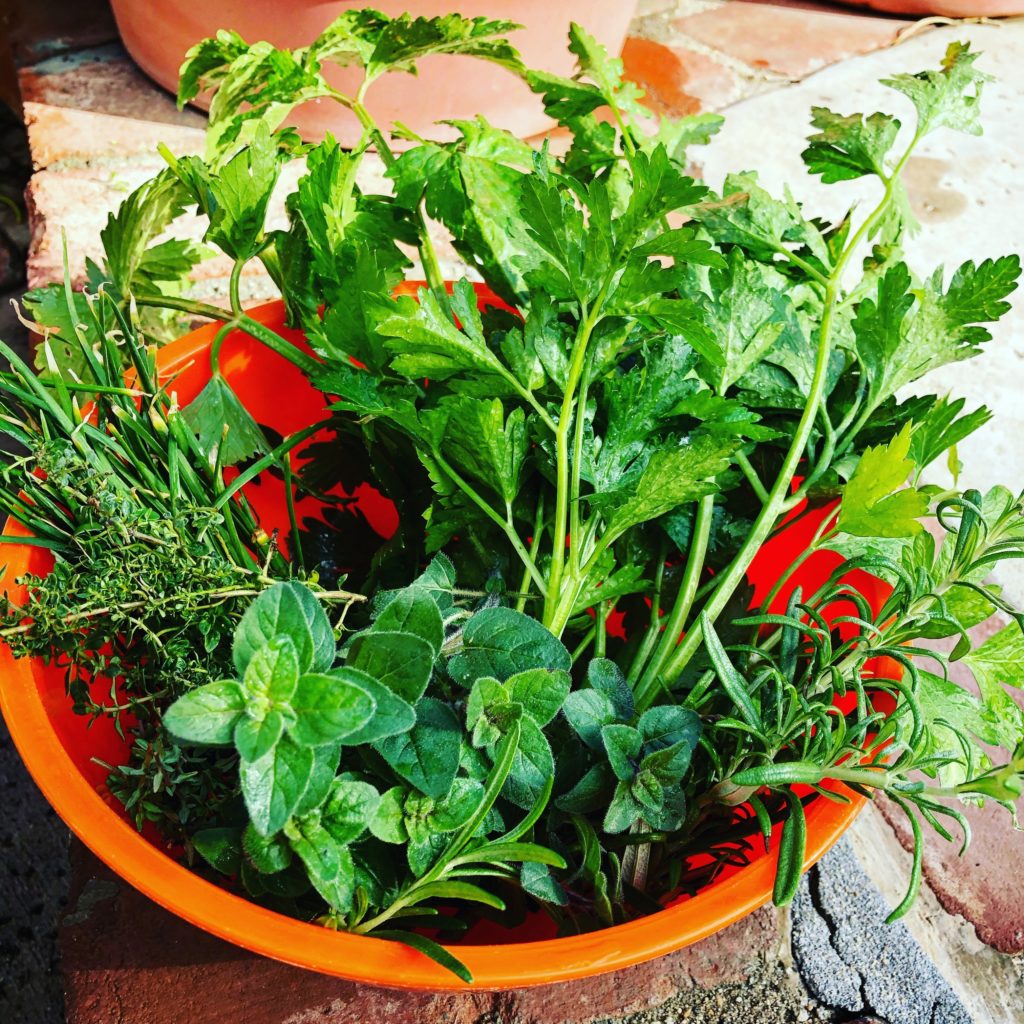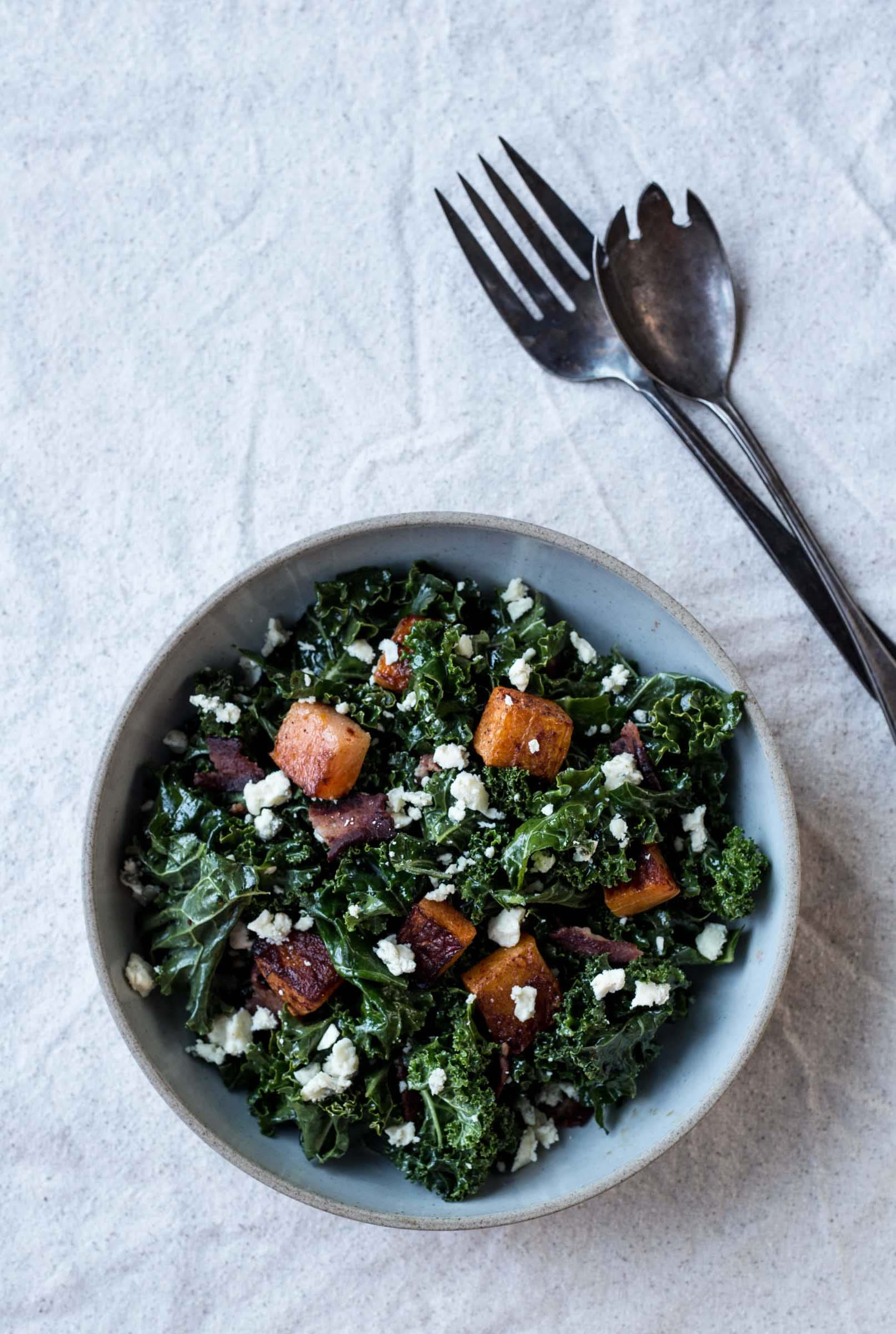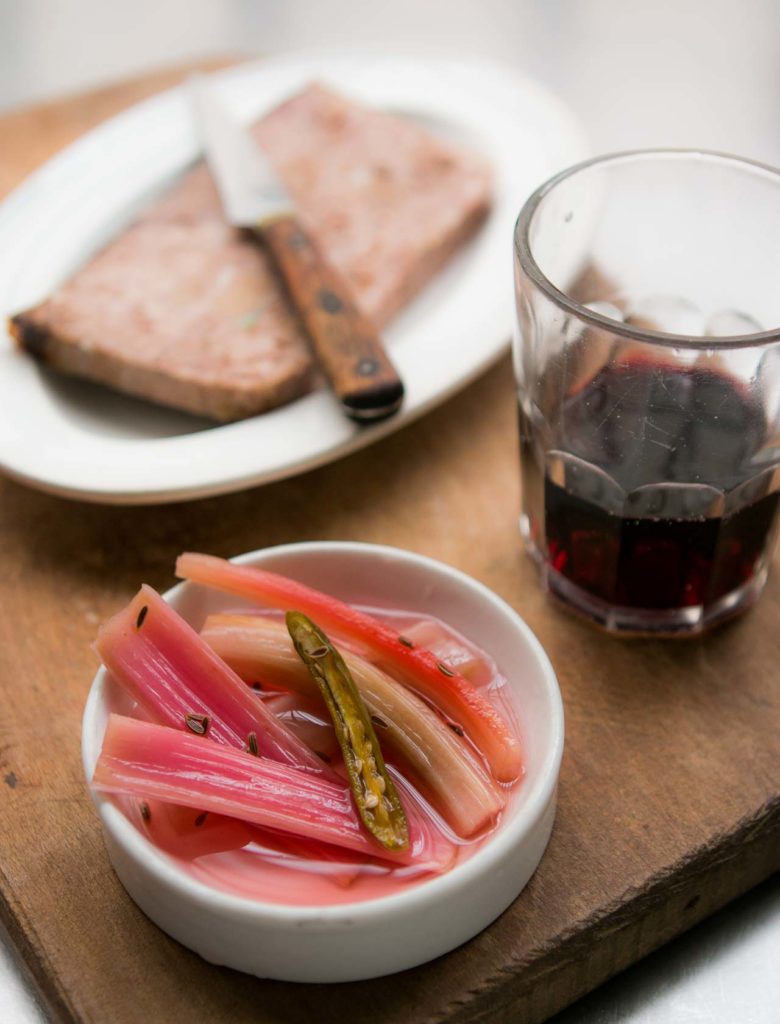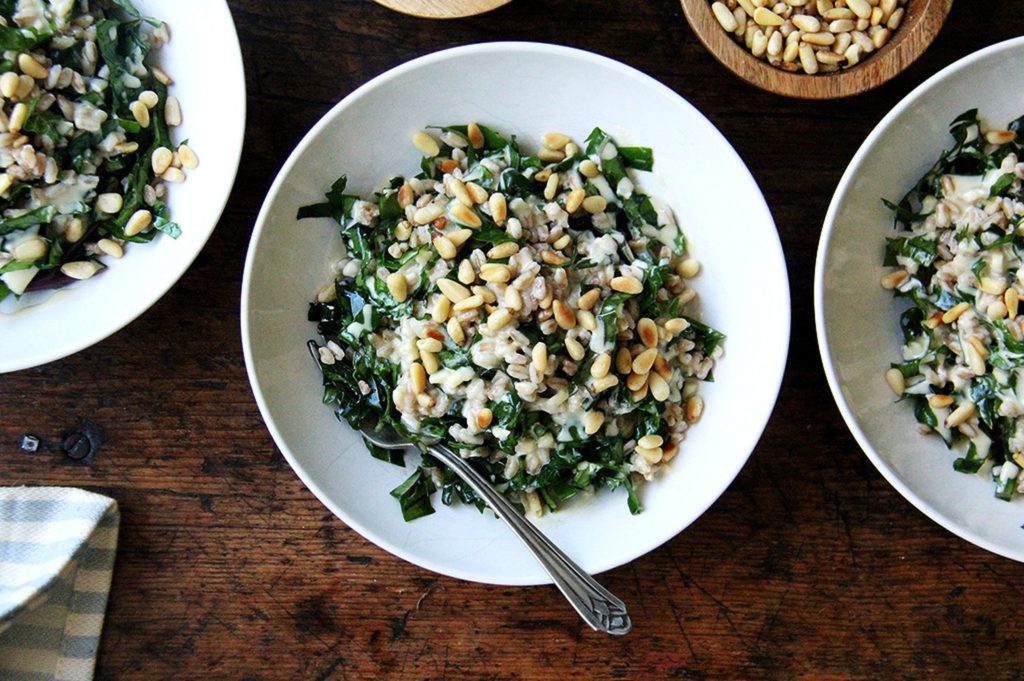

“Let us be grateful to the people who make us happy; they are the charming gardeners who make our souls blossom.”
Marcel Proust
I believe a functional garden is a successful garden. It makes sense that a garden that meets a need will be well-tended and cherished. A goal is a great motivator and growing something special for the holidays will keep you excited and on task with your winter garden. Let’s try it!
One of my gardening philosophies is GROW ONE THING. Meaning, if you are overwhelmed, short on time and resources, or merely human…try to master GROWING ONE THING. Rosemary, for example, is hardy and can give you endless options for cooking, decorating and crafts. Arugula is plentiful, versatile, makes pretty flowers and it’s easy to collect the seeds for replanting or gifting. Onions are attractive, take up little room, repel insects and you can eat the tops and bottoms. Dill is fantastic fresh or dry, attracts butterflies, is the key to great pickles and dill seeds are pretty, yummy and a cinch to collect. Pick one great veggie, herb or flower and go for it! Soon you’ll be picking up another and another and another to master. If you aren’t successful at a particular plant or your garden won’t cooperate, move on to the next idea and celebrate your successes.
We can utilize our garden in many creative ways – for ingredients in special meals, festive decorations and original homegrown gifts.
Many crafts and gifts start with garden herbs and flowering plants. Thankfully nature is very accomodating: these plants are easy to grow, perennial and store well so you can start your projects early. You can create sachets, teas, infused oils and vinegars, scrubs and bath salts, smudge sticks, wreaths, butters, culinary salts, dried herb bundles, flavored syrups and liquors.
Herbs and flowering plants to try at home are a long and wonderful list:
- Basil
- Catnip
- Chamomile
- Chervil
- Chives
- Dill
- Fennel
- Lavender
- Lemon Balm
- Lemon Verbena
- Lemongrass
- Marjoram
- Mint
- Nettles
- Oregano
- Parsley
- Rosemary
- Sage
- Savory
- Scented Geranium
- Tarragon
- Thyme
- Tulsi
And there are so many varieties within these varietals, like Pineapple Sage, Chocolate Mint and Lime Thyme!

Traditional fall gourds and winter squash make beautiful table and house decorations, and are perfect for holiday meals. However those vegetables need started in the spring. But don’t fret! There are many veggies you can start right now that will be ready for the holidays.
Plants you can start in the garden now and will have in time for the holidays are all herbs with the exception of Italian basil and cilantro. (Italian basil is a summer herb and in winter it should be bought fresh at the grocery store or kept as an indoor plant on the windowsill. In the case of cilantro, it is a troublesome herb in the garden and for a guaranteed ingredient, it should be purchased the day before you need it. Persian, Opal, Thai and African basil are more perennial and very ornamental and can be attempted in the garden year round.) Herbs and flowering plants should be planted by seedling to have a substantial harvest by the holiday but many can be started by seed when time is not a concern.
Veggies that should be planted at least a month before your holiday as they are fast growers include: radishes, lettuces, kale, chard, arugula, mustard, bok choy, spinach and green onion. Except for the radish which is always planted from seed, the rest can be planted by seed or seedling.
Give a little more time to peas, collards and cabbage. They also can be planted by seed but seedlings are okay too. The longest time needs given to carrots, beets, broccoli, kohlrabi, cauliflower, brussels, and bulb onions. Seedlings should be started by early November for a Thanksgiving meal.
When thinking about your homegrown holiday dishes, don’t overlook all the ways your garden harvests can be used. Aside from being the main ingredients in your dishes, there are garnishes, gremolata, pickles, dips, vegan butters, oils, vinegars, pestos, chutneys, chimichurri and hummus, teas and infused syrups and spirits for drinks. And you can create homemade stocks and sauces as well. These elements really elevate your cooking and presentation and you get the incredible satisfaction of utilizing your garden.
Wow! I hope you are getting as excited for the holidays as I am! You’ll be impressing yourself AND your friends and families in no time. Holiday meals and gifts are a celebration of your life and family and when including garden harvests, your creations highlight your gratitude for nature and the lifestyle you have worked so hard to cultivate. Here are some more ideas to motivate you.
Think about vegan beet butter, cauliflower and tahini dip, roasted fennel and cabbage, arugula pesto, salad and pizza, mint pea soup, kohlrabi leek soup, grilled bok choy, mustard green quiche, kohlrabi fritters, warm grain bowls full of veggies with a luscious sauce and a vegan egg, miso and honey-glazed radishes, kale chimichurri, carrot cannelloni, collard slaw, sage syrup, chile vodka, oregano oil, candied violets and lavender sugar.
Gardens teach us so much and one of the lessons that occurs to me reading through this list is: the possibilities are endless. Put the FUN in functionality and grow your holidays this year!
Here’s a few final recipes to inspire you when adding your own homegrown herbs and vegetables to your holiday dishes. HAPPY HOLIDAYS GARDEN WARRIORS!

BUTTERNUT SQUASH KALE SALAD WITH MAPLE-BOURBON DRESSING From the amazing Andrea Bemis’s cookbook “Dishing Up the Dirt.”
For the Squash:
• 1 medium-sized butternut squash
• ½ teaspoon cinnamon
• ½ teaspoon paprika
• ¼ teaspoon cayenne powder
• ½ teaspoon fine sea salt
• 2 tablespoons olive oil
Maple Bourbon Vinaigrette:
• 1/4 cup bourbon
• 2½ tablespoons maple syrup
• 2½ tablespoons apple cider vinegar
• 1 teaspoon Dijon mustard
• 3 tablespoons olive oil
For the Salad:
• 1 large bunch of kale, tough stems trimmed and cut into bite-size pieces (about 6 cups)
• 4 slices vegan bacon
• ¼ cup almonds
• ¼ cup vegan blue cheese, crumbled + additional to taste
• 2 large Medjool dates, pitted and roughly chopped
• Pinch of salt and pepper to taste
1. Preheat the oven to 425F. Peel the squash, scoop out the seeds and cut into ½-inch-thick cubes. In a bowl, toss the squash with the spices and oil. Place on a parchment-lined baking sheet and roast in the oven until golden and tender. About 20 minutes. Flip squash halfway through cooking.
2. In a small saucepan over medium heat, bring bourbon to a boil. Reduce heat to low and cook until bourbon is reduced in half, about 2 minutes. Stir in the maple syrup and apple cider vinegar. Continue to cook over low heat for about 2 minutes longer. Turn off the heat, add the mustard, and drizzle in the oil.
3. In a small dry skillet over medium heat, lightly toast the almonds until golden, about 3 minutes. Remove from the heat, and when cool enough to handle, roughly chop.
4. In a large frying pan, cook the bacon until crisp. Remove from heat and place on paper towels to drain fat. When cool enough to handle, chop into bite-sized pieces.
5. In a large bowl, toss the kale with 1-2 tablespoons of the warm bourbon dressing until lightly coated. Use your hands to massage the dressing into the kale until the leaves are tender and bright green. Add the squash, bacon, almonds, blue cheese, and dates. Drizzle with more dressing, tossing evenly to coat. Sprinkle the salad with salt and pepper and divide between plates/bowls. Top with additional cheese if desired.

Credit for this recipe is Chef David Lebovitz. He makes a great point on his website about anti-gaspillage and how important it is to not throw away edible parts of your plants. From the chef: This is a great way to use something you may have thought of tossing. These are quick pickles and not meant to be kept a long time. If you want to can them, check out the USDA complete guide to home canning. I’d say it’s best to eat them within a few months, as they’ll fade the longer they’re kept. You can vary the recipe by using rice vinegar or white wine vinegar, although I wouldn’t use anything too fancy because the spices and other flavors will overpower it. The chile adds a bit of heat but you can skip it if you want to.
- Swiss chard stems from one large bunch, about 12 ounces stems, washed
- 1 Thai chile, fresh or dried, split lengthwise
- 2 cloves garlic, peeled and sliced thinly
- 1 teaspoon mustard seeds
- 1/2 teaspoons fennel seeds
- 2 cups white vinegar
- 1 cup water
- 1/3 cup sugar
- 3 1/2 tablespoons kosher or coarse white sea salt
1. Trim the chard stems of any bits of leaves and put them in a large jar that has a lid (about 1 quart) along with the split chile (if using) and sliced garlic.
2. Toast the seeds in a skillet, stirring them frequently over medium to medium-high heat, until they’re fragrant, which will take just a few minutes. Set aside.
3. In a small, nonreactive saucepan, heat the vinegar, water, sugar, and salt, stirring until the sugar and salt are dissolved. Remove from heat and let the brine cool 5 minutes, stirring a couple of times as it cools.
4. Pour the brine into the jar, add the seeds, and cover it. Let it sit at room temperature for about an hour, agitating the jar every so often. If after an hour, if some of the stems aren’t submerged in the brine, open the jar and press them down, so they are. Refrigerate the Swiss chard stems for about one week before eating them.
FARRO WITH GREENS, TAHINI SAUCE AND TOASTED PINE NUTS

- 1.5 cups par-cooked farro
- kosher salt to taste
- 3 to 5 ounces greens, such as kale, Swiss chard, arugula
- 1/2 cup extra virgin olive oil, divided
- fresh cracked pepper
- 1 lemon, halved, plus more to taste
- 1/4 cup well-stirred tahini paste (warm in the microwave and use an immersion blender)
- 1 teaspoon maple syrup
- 1 clove garlic, minced, optional, see notes above
- 1/2 cup pine nuts
- Place a large pot of water over high heat. Bring to a boil. Add the farro and a big pinch of salt (I add 1 tablespoon). Cook according to package instruction but taste before draining — my 10-minute Trader Joe’s farro consistently takes 15 minutes. Drain. Place in a large bowl.
- Meanwhile, remove the greens from the stems (if using kale or chard), then slice very finely — you can chiffonade the leaves (stack leaves on top of each other, roll them into a tight coil, then cut down to make long thin strips) but consider cutting the thin strips into smaller pieces as well. You want small pieces of greens here. Place the greens in the bowl with the farro, add ¼ cup olive oil, ½ teaspoon salt, and fresh-cracked pepper to taste. Squeeze half of the lemon into the bowl catching the seeds with your hand. Toss, taste, and adjust with more salt or pepper to taste—I usually add another quarter teaspoon of salt and sometimes more. The farro and greens should taste slightly lemony and nicely seasoned, but nothing spectacular—remember that the magic happens when the grains and greens meet the tahini sauce. At this point, you can chill the farro and greens until you are ready to serve.
- Make the tahini sauce: Stir together the tahini, remaining ¼ cup olive oil, juice of remaining half lemon, ¼ teaspoon salt, maple syrup, garlic, if using, and 2 tablespoons water. Add more water by the tablespoon. Dressing should be pourable—I typically add another 2 tablespoons water. Taste and adjust with more salt, lemon, or maple syrup to taste. Transfer to a serving bowl or set directly on the table.
- In a medium skillet over medium (or higher) heat, stir the pine nuts until golden all around. Do not walk away from the skillet—if you stand there the entire time, you can get away with using higher heat for a shorter period of time.
- When ready to serve, spoon the greens and grains into bowls, drizzle the tahini sauce over top, and sprinkle pine nuts over top as well. Pass more sauce and pine nuts on the side.

- 1/2 pound medium red potatoes, scrubbed
- 1/2 pound medium red beets, peeled
- 6 ounces yellow beets, peeled
- 7 ounces fennel bulb, green stalks trimmed (save one big feathery frond for garnish)
- 1/4 pound round red radishes
- 2 tablespoons unsalted butter
- 2 tablespoons minced fresh rosemary
- 2 tablespoons minced fresh thyme, divided
- 1 shallot, finely diced
- 3 garlic cloves, grated (use a Microplane)
- 1 1/2 cups vegan whipping cream
- 1 tablespoon flour
- About 2 tsp. each fine salt and freshly ground pepper
- 1 cup finely shredded vegan cheeses (parmesan, gruyere, cheddar)
Using a handheld slicer, slice potatoes, beets, fennel, and radishes into 1/8-in.-thick slices. Preheat oven to 325°.
Put butter, shallots, and garlic in a small saucepan and cook over medium-low heat until aromatic, about 1 minute. In a small bowl, whisk 2 tbsp. flour with 1/4 cup cream until smooth. Whisk in remaining cream, then pour into saucepan along with 1 tbsp. thyme, the rosemary, salt, and pepper; let simmer until shallots are translucent, about 5 minutes.
Butter a 1- to 1 1/2-qt. ceramic or cast-iron gratin dish or shallow baking dish. Arrange half of potatoes, beets, radishes, and fennel slices tightly to cover bottom of dish, overlapping them like dominos and alternating vegetable types, in an oval around edges and a row up center. (You may have to tuck fennel pieces in since slices may not hold together.) Season lightly with salt and pepper. Pour half of cream mixture over slices, stirring as you pour so shallots and garlic are evenly distributed, and top with half of Gruyère. Arrange remaining sliced vegetables the same way, then top with remaining cream mixture and Gruyère. Sprinkle parmesan on top.
Cover gratin with oiled foil and bake until vegetables are tender when pierced with a fork, 1 to 1 1/2 hours. Remove the foil and broil until golden and bubbly, about 5 minutes.
Top with remaining 1 tbsp. thyme. Let sit 10 minutes before serving.

Get growing good people!
